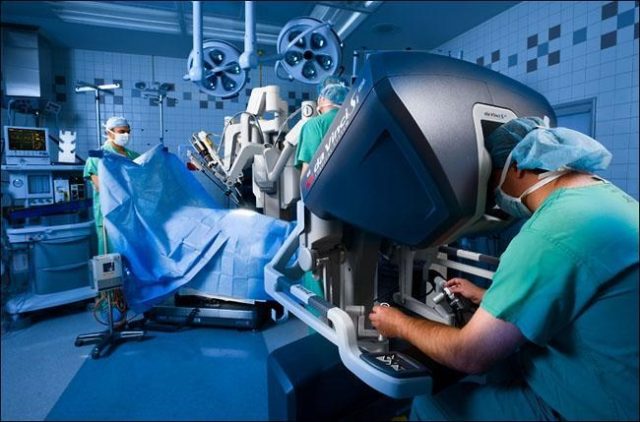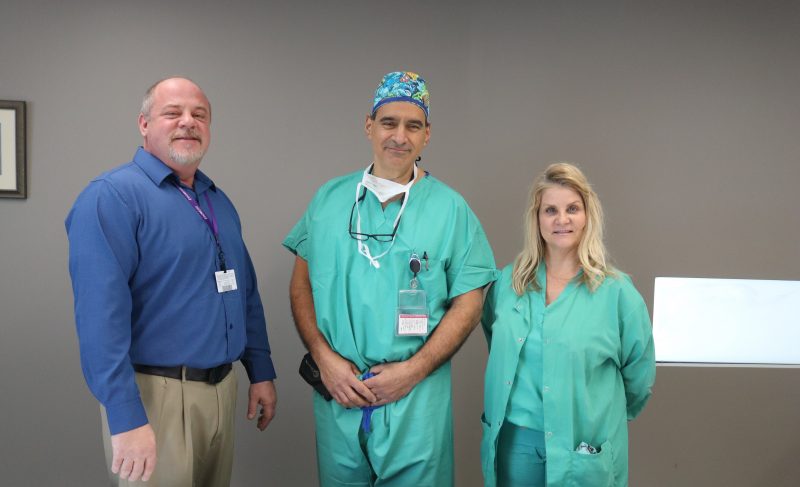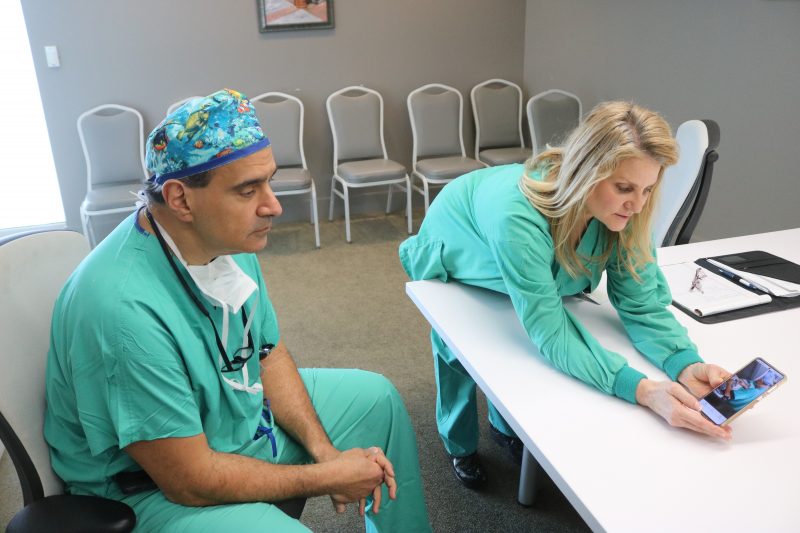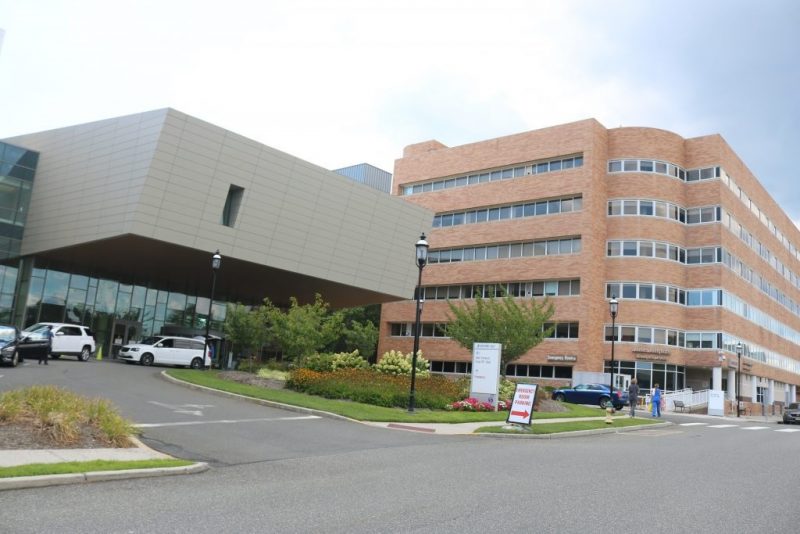
By DONALD WITTKOWSKI
To some, it may sound like something straight out of a science fiction movie: A robot named da Vinci that performs surgery.
But in this case, the da Vinci Xi surgical robotic system at Shore Medical Center in Somers Point is a high-tech tool that helps doctors to perform an array of minimally invasive surgical procedures with greater precision.
In other words, the robot is there to assist the surgeon, not the other way around.
Surgeons stay in the operating room and use their hands to control the da Vinci’s camera and surgical instruments to perform the procedure while viewing the entire operation in sophisticated 3DHD.
The 3DHD vision system provides surgeons with a highly magnified view, virtually extending their eyes and hands into the patient. The tiny instruments have an even greater range of motion, with built in tremor-filtration technology to allow each move to have smooth precision.
Just as technologies such as MRI and CT scanners enhance doctors’ skills beyond what the human body allows, robotic-assisted surgery using the da Vinci system by Intuitive extends the capabilities of a surgeon’s eyes and hands, according to a Shore Medical Center news release.
Dr. James Tayoun, a surgeon at Shore, explained that the da Vinci system allows surgeons to peer inside the body far better than simply using their normal eyesight.
“It’s like watching a plain TV. It’s a 2D image,” Tayoun said of a surgeon’s normal eyesight in the operating room. “Now, using da Vinci, I am seeing 3D images, so I actually see structures that are out and not flat.”

The first robot-assisted surgery was performed by Tayoun at Shore on Oct. 17, 2023, during a robotic hernia repair. Since then, more than 200 robot-assisted surgeries have been performed at the hospital.
Tayoun pointed out that minimally invasive surgery using the da Vinci system means smaller incisions, less pain and a faster recovery time for patients.
“The advantage of the da Vinci robot is the safety it brings to the operating room, as far as the visualization and the dexterity it allows for surgeons performing minimally invasive surgery. So, for minimally invasive surgery, we’re still having smaller incisions, still quicker recovery, still less pain,” Tayoun said.
Rather than having open surgery, where the surgeon makes incisions long enough to see the entire surgical areas and perform the procedure using hand-held tools, this type of minimally invasive surgery allows the surgeon to operate using a camera and long, thin instruments through a small incision ranging in size from eight to 13 millimeters. This surgery allows for shortened hospital stays and faster recovery times compared to open surgeries, according to Shore’s news release.
The robot is used at Shore for a multitude of minimally invasive surgical procedures, such as colorectal surgery, general surgery, gynecologic oncology surgery, gynecologic surgery, hepatobiliary surgery, pediatric general surgery, and urological surgery.
Eventually, Shore hopes to train all of its surgeons on the da Vinci technology. Another goal is to expand robot-assisted surgery into more intricate and serious types of surgery, Shore officials said.
“It’s a new modality,” Jacqueline Evenson, Shore’s clinical supervisor for operating room robotics, said of robot-assisted surgery becoming a more common surgical tool for doctors.
At the same time, Evenson emphasized that the surgeons are still the ones performing the operations, not the robot.
“I think people get confused that it’s AI doing the surgery. It’s not. It’s the surgeon,” she said.

Tayoun used the analogy of a carpenter using a screwdriver or a drill to describe how a surgeon manipulates the da Vinci system.
“We went from screwdrivers to drills to work the screw, but it’s still the carpenter who’s putting the screw where it belongs,” he said.
William Juhas, Shore’s administrative director of surgical services, said the hospital recognized the need for advanced technology such as robotic-assisted surgery to give local patients the highest level of care.
“We don’t want to send our patients from our area to other hospitals. We feel we have the obligation to treat them here.” Juhas said.
He added, “We were proactive to our neighborhood’s needs.”
Juhas said the da Vinci system cost “north of a million dollars.”
As an example of future uses of the da Vinci system, Juhas said Shore will be looking to expand into other modalities, such as urology to treat prostate cancer, gynecological oncology to treat female reproductive cancers and the treatment of abdominal cancers.
Noting her roots in Somers Point and Ocean City, Evenson stressed that Shore is looking to strengthen its ties to the local community by offering its patients the latest advancements in medical technology.
“I grew up in this community. I was born in this hospital and grew up in Ocean City. And Shore Medical Center has always been a really big part of the community. One of the things that our hospital always wanted to do is to be able to take care of the patients in our community, and by being part of the technology advancements we can keep our patients here,” Evenson said.
“As a local, we don’t want to have to go to Philadelphia for our surgeries if we can get them here. A lot of our community invests in the hospital here, so we want to provide them with the best care we can,” she added.








